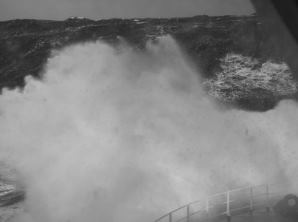Heavy Seas Slowing MH370 Search
Waves as high as 60 feet have buffeted one of the search ships, measuring almost from the ship's waterline to the top of its mast, according to the Australian Transport Safety Bureau, which now expects to complete the examination of the expanded search area in July or August.
The underwater search for the missing jetliner that was designated MH370 continues in the far southern Indian Ocean. A June 1 operational report from the Australian Transport Safety Bureau, the agency in charge of the search, indicates rough weather is slowing the work of searching an expanded 120,000-square-kilometer section of the ocean where it is assumed the plane crashed.
 The Boeing 777-200ER vanished with 227 passengers and 12 crew members on board on March 8, 2014, while en route from Kuala Lumpur to Beijing. A few pieces of the aircraft have washed up on Reunion Island and Mozambique in 2015 and early this year, but the bulk of the wreckage and the plane's "black boxes" have not been recovered.
The Boeing 777-200ER vanished with 227 passengers and 12 crew members on board on March 8, 2014, while en route from Kuala Lumpur to Beijing. A few pieces of the aircraft have washed up on Reunion Island and Mozambique in 2015 and early this year, but the bulk of the wreckage and the plane's "black boxes" have not been recovered.
ATSB reported that winter weather conditions -- rough seas and strong winds -- are hampering search operations. The peak height of waves buffeting the Fugro Discovery was 18.2 meters, or roughly 60 feet, nearly equal to the 20-meter height from the ship's waterline to the top of its mast, according to the update. A second ship named Fugro Equator has been unable to undertake deep tow search activities due to the weather -- deep tow search equipment has not been deployed from any search vessel in the past three weeks to ensure the safety of their crews.
None of the search vessels has sustained damage that would affect its ability to continue the search. Doctors aboard each vessel have been monitoring the health of all personnel, according to the agency, which reported that more than 105,000 square kilometers of the sea floor have been searched so far. If the aircraft is found and accessible, Australia, Malaysia, and the People's Republic of China have agreed to plans for recovery activities, including securing all the evidence necessary for the accident investigation. And the governments have agreed there will be no additional expansion of the search area, barring new information coming to light about the aircraft's location.